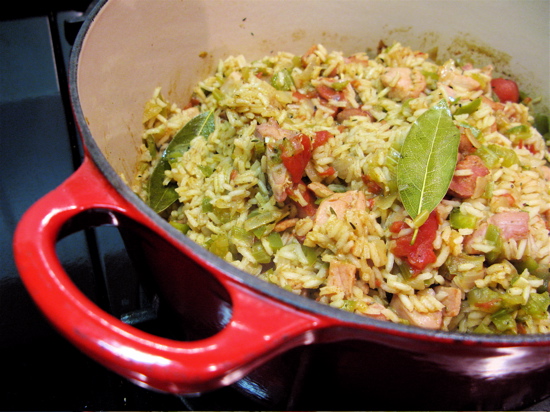
New Orleans pulls out all the stops for Mardi Gras, which ends tomorrow with Fat Tuesday. Fabulous food is always at the center of festivities.
Still, you don’t have to break the bank with pricey Gulf shrimp, fresh oysters and crawfish flown in live from Louisiana to join the party at home. Just follow the lead of the thrifty Cajuns, who’ve always managed to make the most of humble ingredients. Crawfish, after all, were one of the gifts of the bayous to resourceful settlers centuries ago – an abundant native crustacean free for the catching.
In honor of Mardi Gras, here’s a deeply flavored jambalaya with budget-friendly ingredients perfect for our times. The shrimp you might expect at the heart of a tasty jambalaya are just too expensive for my wallet this year – unless I break down and buy imported shellfish, which are a bad environmental choice in any case. So I made chicken thighs the stars of this one pot meal, with andouille sausage for spice and a little ham for smoky depth. Continue reading Jambalaya for our times




